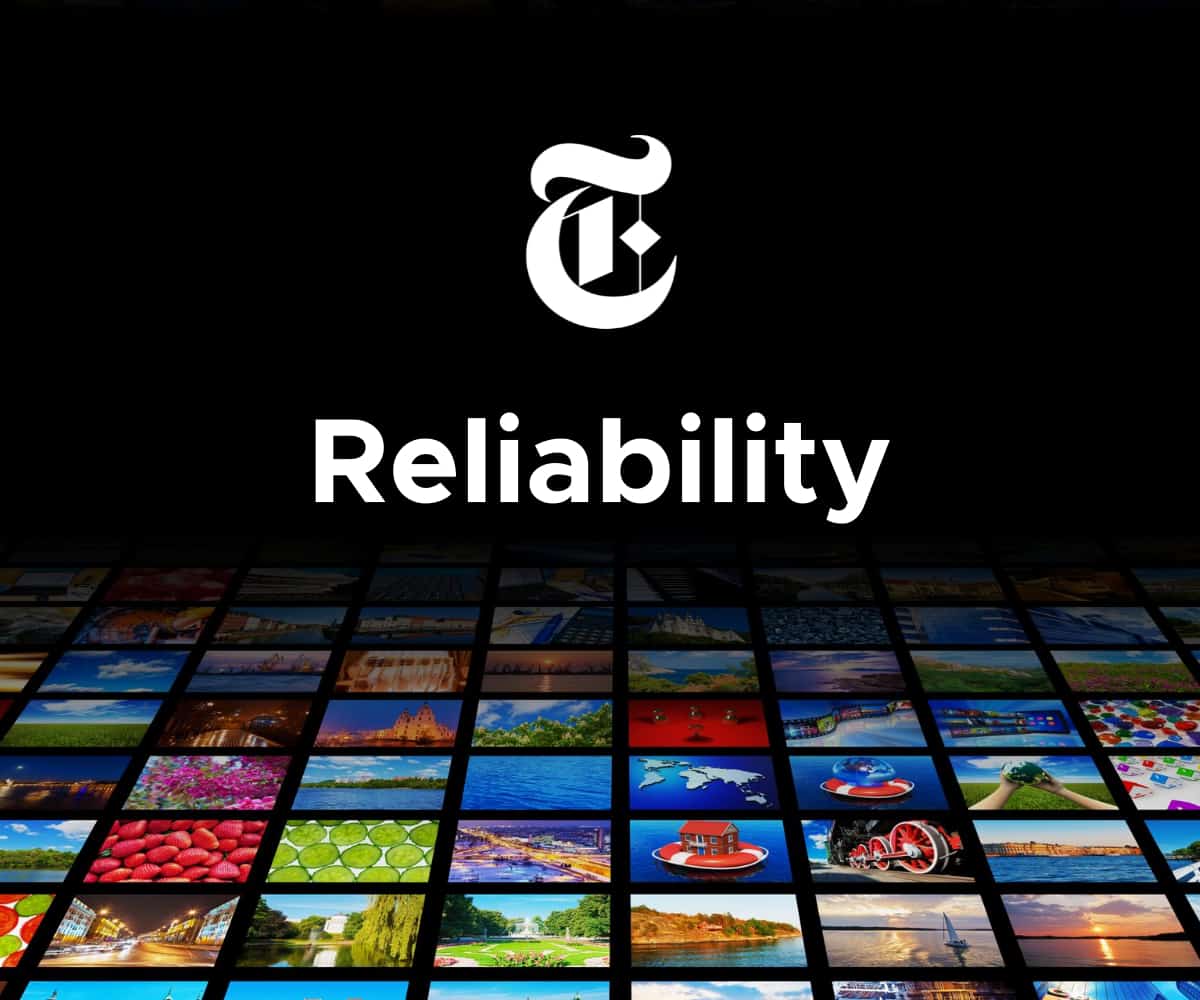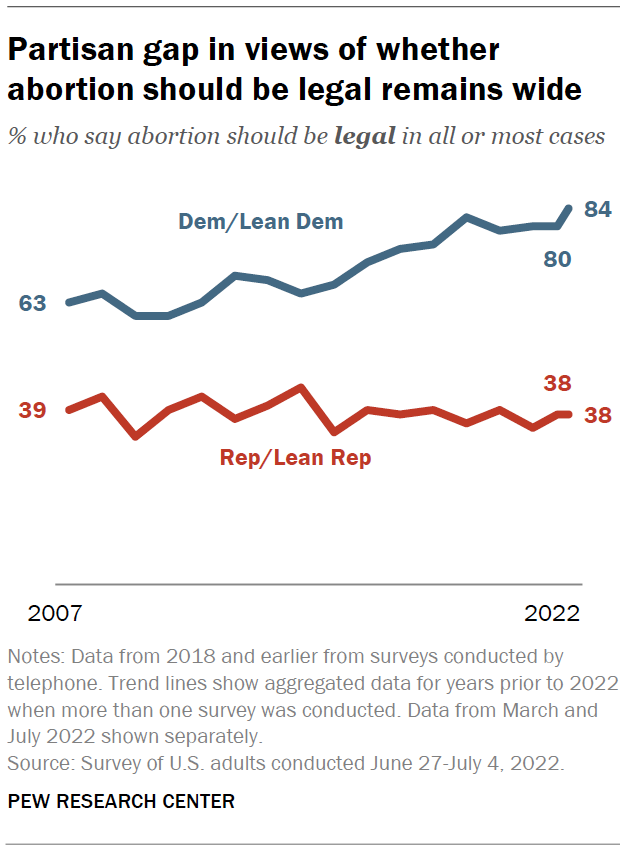
The New York Times (NYT) is one of the most prominent newspapers in the world and has been a trusted source of news for over 150 years. However, with the rise of fake news and misinformation, it’s more important than ever to be able to distinguish reliable sources from unreliable ones. In recent years, the paper has faced criticism about its reliability as a news source. As of 2022, only 24% of Americans believed the NYT to be “very credible.”
In this article, we will delve into the various aspects of the NYT’s accuracy and reliability to help readers make informed decisions about this iconic news outlet.
Does Reliability Matter?
Reliability, in general, refers to how trustworthy or accurate information, or in this case, a news source is. If we consider this definition, it quickly becomes clear why reliability is important in media sources. If we can’t trust the things we read then there isn’t much of a point in continuing to consume content from that source, after all. So how exactly can we gauge the reliability of a news source anyways?
There are several potential measures of reliability to look out for when trying to determine whether a media source is reliable or not. Red flags for an unreliable article can include the presence of wild unsubstantiated claims, facts dependent on other unreliable sources, heavy use of opinionated language, and more. Some indicators of a reliable news source, on the other hand, include things like:
- Absence of subjective/opinionated language in articles
- Credible sources cited (e.g., neutral sources, .gov, .edu websites)
- Facts and statistics backed by multiple relevant outside sources
- Use of primary sources when possible (e.g., interviews, quotes)
- Information that remains consistent across news sources
How Does New York Times Fare In Its Reliability?
Political bias indicators help to fairly measure how reliable the New York Times is. Biasly, in particular, has given the New York Times a 71% accuracy score, which indicates that, for any given NY Times article you come across, this is how likely it is to be reliable on average. Comparable sources like MBFC have given this outlet a “high” factual reporting score with the explanation that “they use credible sources such as law.cornell.edu, Financial Times, and The Washington Post. Story selection is typically balanced; however, wording tends to lean left in most cases. Editorials on the NYT almost always favor the left and sometimes are inaccurate… The New York Times still qualifies for High Factual status due to the incredible amount of stories they publish…”
Their explanation provides some of the key measures of reliability, including accuracy, selection, and omission. So what do these mean — and what does it tell us about the NYT’s reliability overall? We’ll cover this and what makes the difference between a reliable article and an unreliable one.
NY Times Accuracy and Reliability
There has been much scrutiny regarding the dependability and truthfulness of articles published by the New York Times. Some contend that their reporting is more focused on promoting a particular viewpoint rather than presenting the facts. However, the question remains as to where the New York Times falls on the ideological spectrum and how this affects the credibility and accuracy of their articles.
When evaluating the degree of bias in an article, it is crucial to consider its accuracy. This entails determining whether the article presents factual information to support its claims. Two significant factors to consider in assessing an article’s factual and accuracy levels are checking the accuracy of its claims and sources and evaluating its selection and omission bias.
Selection bias is when stories and facts are selected or deselected, often on ideological grounds, to create a narrative in support of the new sources’ ideology. Omission bias, on the other hand, is when different opinions and political views regarding a situation are left out, so that the reader is only exposed to the ideological perspective supported by the author. It’s important to keep in mind these two types of biases when trying to assess an article’s level of accuracy.
Biasly uses a scale of 1-100 to rate accuracy where 1 is totally inaccurate and 100 is completely accurate. We rank media sources by analyzing the credible sources they use, their ability to reason with facts, and the number of credible external sources used in their articles. Biasly’s analysts have given the NY Times a 71% accuracy rating, which represents the average reliability of any of their online articles, though some will be higher or lower. Comparatively, one of the NY Times’ top competitors, the Wall Street Journal, received a 96% accuracy score, indicating the Times has ample room for improvement in terms of factual reporting and linking if it wants to maintain the public’s trust.
Most news media companies’ reliability varies from article to article. These fluctuations in reliability are usually a result of changes in bias — specifically, selection and omission bias — meaning articles with greater political bias tend to be lower on the reliability scale. This is often because the accuracy of facts presented and these biases influence the indicators of reliability.
For example, an article entitled “Jake Ellzey Defeats Widow of Former Congressman in Race for Texas Seat” demonstrates a good example of reliability by the NY Times. In terms of selection and omission bias, the author strikes a neutral balance by including some perspectives from Ellzey, his supporters, and experts who can offer insight into why and how his campaign was successful. However, even though she lost the election, some perspective from Wright would have provided more balance. When it comes to accuracy, the report on this story is highly thorough and informative on the tactical portion of the campaign. Most importantly, it does not smear anyone’s view. A little more perspective from Wright or one of her supporters would have made for a more complete picture of the story, but it could be considered mostly reliable.
We’ll cover more examples like this below.
Analysis of Reliability in NY Times Opinion Pieces
In opinion-style journalism, bias is universal. Opinion articles are essentially the opposite of factual reporting; they are meant to read like a persuasive essay, conveying the reader’s viewpoint more than reporting facts. As such, opinion editorials tend to have lower levels of accuracy and reliability. Take, for example, this opinion piece entitled “The Abortion Ban Backlash Is Starting to Freak Out Republicans.”
One of the biggest reliability issues with this article is its sources. Reliable articles tend to give equal weight to both sides of an issue by giving a voice to sources and individuals representing each side of the political spectrum. In this article, the author quotes Ann Coulter, a conservative political pundit — but she selectively chose quotes that portray Republicans in a negative light, painting them as extreme in their stance and unwilling to compromise:
“The demand for anti-abortion legislation just cost Republicans another crucial race… Please stop pushing strict limits on abortion, or there will be no Republicans left.”
Granted the author does cite original sources, such as the RNC’s pro-life resolution, for example, the majority of the author’s ideas are backed by left-leaning opinion pieces, including articles from the Washington Post (Opinion) and Axios. According to Biasly’s AI and Analyst Bias Scores, the Washington Post is “Somewhat Liberal,” and Axios is also “Somewhat Liberal.” And, even though the Wall Street Journal tends to lean right, even in its opinion pieces, the author cited an article of theirs that favors Democrats.
This article also has reliability issues in terms of omission bias and accuracy. Throughout the piece, the author focuses solely on the margin of Republicans who favor all-out abortion bans:
“The reason voters think Republicans support full abortion bans, as Schweppe wrote, is that many of them do.”
“Last year, the Idaho’s Republican Party defeated an amendment to the party’s platform allowing for an exception to the state’s abortion ban to save a woman’s life.”
While it is true that some Republicans favor total abortion bans, the reality is that the vast majority of Republicans actually support abortion in the cases of rape, incest, and the health of the mother, according to a Penn Program on Opinion Research and Election Studies 2022 survey of 22,000 American adults. According to this data, Republicans are more flexible and reasonable than the author has portrayed them. This fact is largely ignored and omitted by the author to support her own ideas.
It should also be noted that, while the author seems to imply that conservatives have become more extreme on the issue of abortion, Pew Research shows that conservatives and right-leaning individuals have been fairly steady and consistent in their beliefs since 2007 while Democrats have actually been moving further into more extreme views.

Source: Pew Research
Furthermore, the article states that “ A decisive majority of Americans — 64 percent, according to a recent Public Religion Research Institute survey — believe that abortion should be legal in most cases. A decisive majority of Republicans — 63 percent, according to the same survey — believe that it should not.” However, Pew Research took its own survey of religious U.S. adults who believe in abortion bans. Unlike the article’s survey indicates, Pew shows that only 20% of Republicans found abortion to be “morally wrong in all cases,” while 48% believe in having exceptions on abortion laws — which is less of a “decisive majority” than suggested.
Let’s take a look at a second article entitled “Justice Dept. Warns States on Voting Laws and Election Audits.” While the article is not as biased and makes less of an attempt to reference either political party, the content of the article has problems with the accuracy of its claims. Toward the end of the piece, the author claims,
“… Arizona, Georgia and other states have used the specter of election fraud to pass legislation that restricts access to the polls and hire private auditing companies to perform recounts that have helped sow doubts about the veracity of the election results.”
This statement is verifiably false. While the Georgia voting law, for example, restricts absentee voting by requiring voter ID, lawmakers have stated their motive for this legislation is to make elections more secure and to instill confidence in election results rather than sowing doubt. What’s more, this article ignores the popularity and widespread public support for voter ID requirements with 81% having a positive opinion supporting it, which the author seems to classify as a restriction. Secondly, this piece ignores the fact that the bill expanded early voting opportunities to give more people the ability to vote if they were unable to on voting day. It would not have the exclusionary effect that the author claims.
The left-leaning slant of these opinions makes sense, as the New York Times has more of a liberal following and is incentivized to engage in further selection and omission bias by choosing to publish opinion pieces that are critical of conservative ideals — even at the cost of their reliability.
So Is the NY Times Reliable?
Although the New York Times as a whole has earned a decent amount of credibility and reliability as a news source, the reliability level varies by author and article type — with opinions being less reliable and some authors being less reliable than others. If you want to know about a specific piece, install Biasly’s News Check Chrome Extension to analyze reliability and bias scores for any article.
It’s important to note that some articles are better at maintaining neutrality and factuality than others. As you continue to analyze the bias and reliability of various articles, you will start to understand how to better spot reliability and accuracy problems within a person’s writing and ultimately improve your media literacy.


























